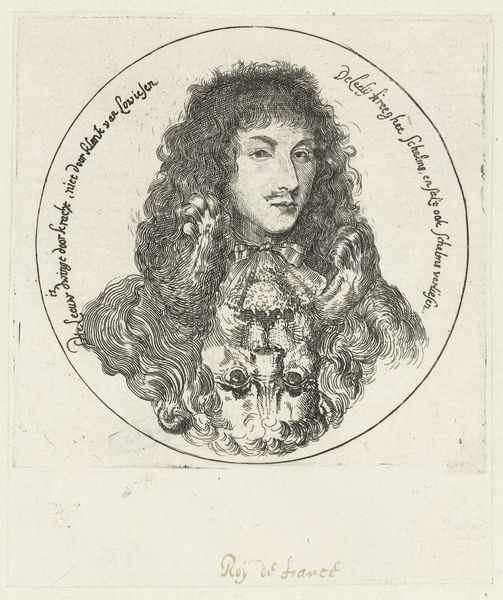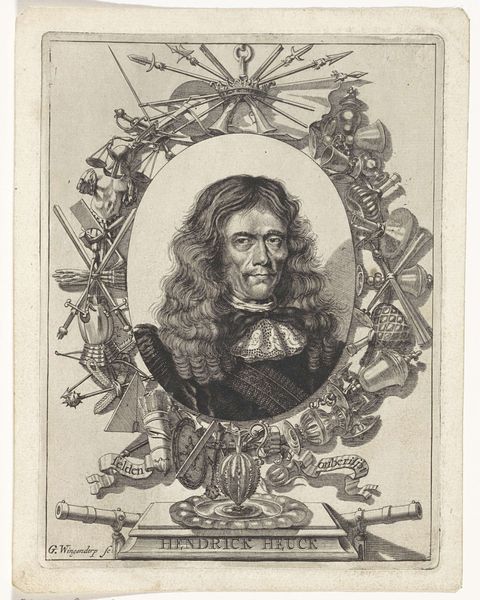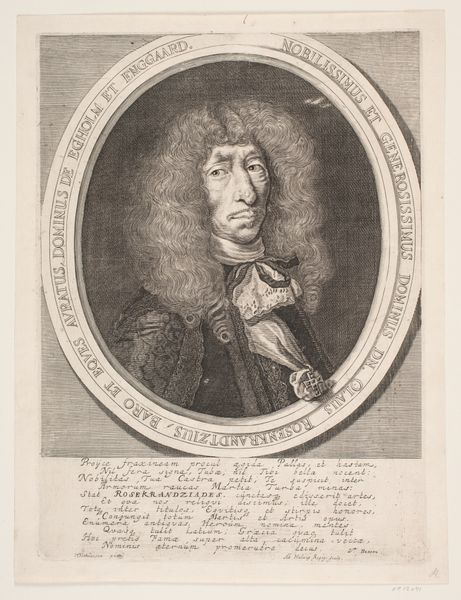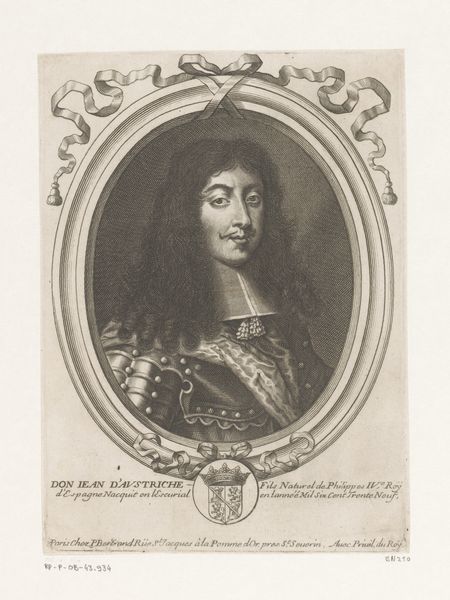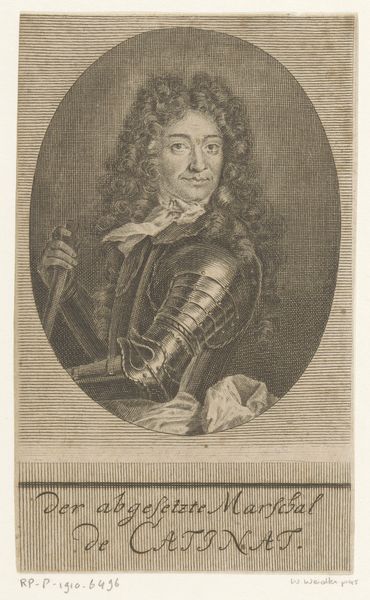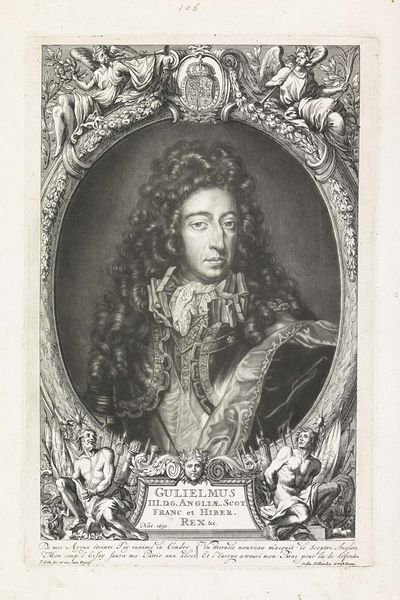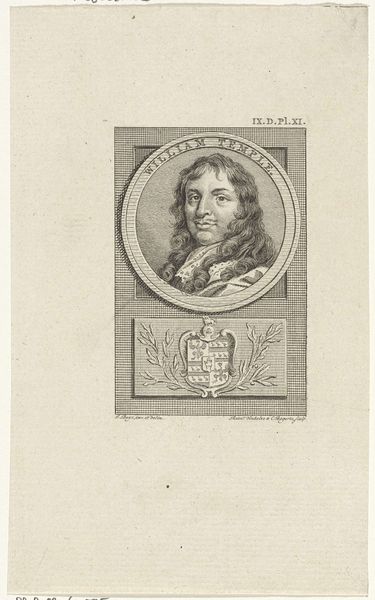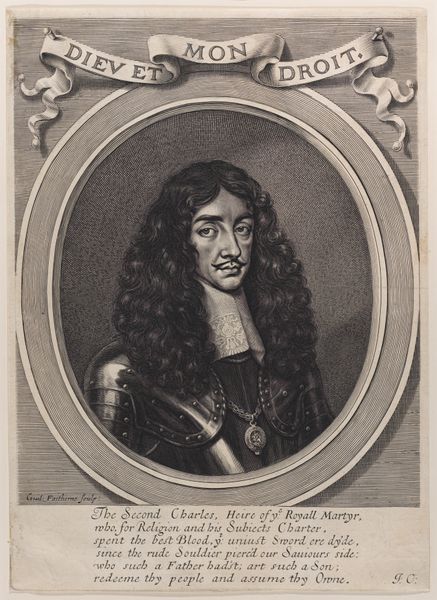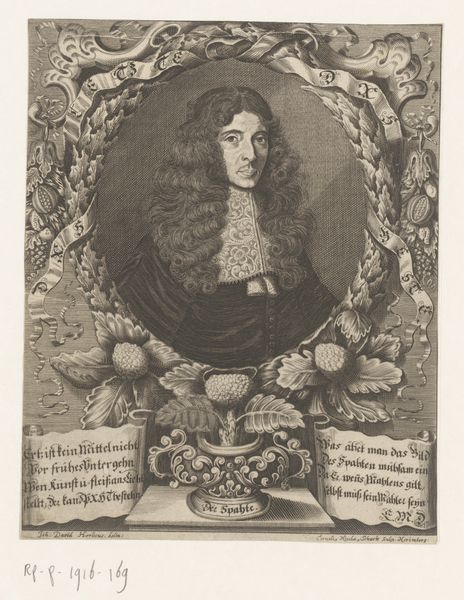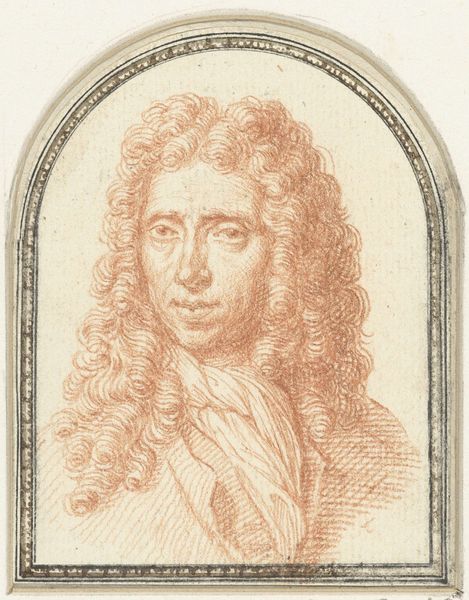
print, etching
#
portrait
#
baroque
# print
#
etching
#
old engraving style
#
personal sketchbook
#
history-painting
Dimensions: height 140 mm, width 118 mm
Copyright: Rijks Museum: Open Domain
Editor: Here we have Romeyn de Hooghe’s "Portrait of Charles II as a Tiger" from 1672, an etching now held in the Rijksmuseum. The visual contrast between the detailed portrait and the surrounding, almost grotesque, symbolic elements strikes me. How should we interpret this politically charged imagery? Curator: Indeed. The etching offers a powerful lens through which to view the complex socio-political landscape of the Dutch Republic in relation to the English monarchy. It's not just a portrait, but a carefully constructed commentary. De Hooghe was known for his involvement in political satire. Knowing that, what aspects of the image draw your attention most? Editor: Definitely the tiger, but also the face in the bottom-left and the fleurs-de-lis on a chain. They don’t obviously connect to the portrait of Charles. Curator: Exactly. Consider how Charles II's restoration to the English throne in 1660 was perceived in the Dutch Republic. He's being equated with the ferocity of a tiger. Are his actions as king seen as a betrayal of previous agreements? Also, are the fleurs-de-lis on a chain mocking Louis XIV or hinting that Charles II aspires to absolute rule? The masked face might reference duplicity or disguise, also implying a moral commentary. Editor: I didn't realize the weight these symbols could carry! This piece serves as potent anti-monarchist propaganda, cleverly packaged within a portrait. Curator: Precisely! De Hooghe masterfully utilized printmaking to disseminate these visual critiques, contributing to the public discourse and shaping opinions. Etchings like these weren’t passive depictions but active participants in the political theater. Considering the time, do you see the political potency of this format of visual production? Editor: I hadn't really thought about the print as a means of activism. The dialogue between art and political ideology here is way more complex than I first assumed. Curator: And seeing it this way gives a more complete view of how we, as a public, were supposed to interact with the art and the political events of the time.
Comments
No comments
Be the first to comment and join the conversation on the ultimate creative platform.
